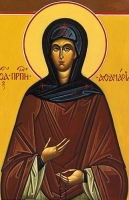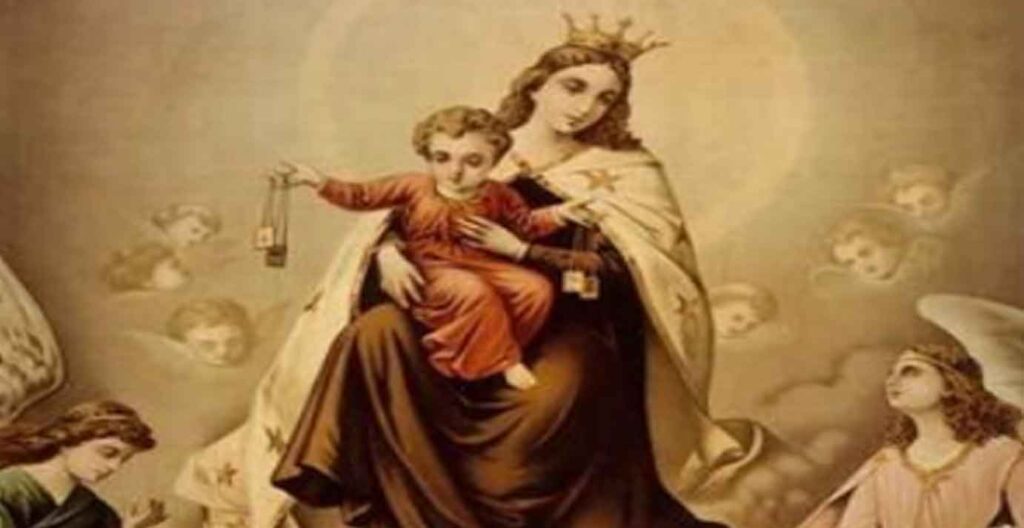Profile
Born to the nobility, the daughter of Nikita and Marina, Athanasia grew up in a pious family. She early felt drawn to the religious life; legend says that when she was a young girl learning to weave, a star suddenly appeared, settled over her heart, and she was enlightened. However, at her parent’s request, she married at age 16 to an army officer. She was widowed after 16 days of marriage when her husband died in battle against invading Arabs. She again considered the religious life, but an imperial edict required all single women of marriage age to marry soldiers.
Her second marriage was to a deeply religious man; the two conducted Bible studies in their homes, and took in the sick and poor. Her husband felt drawn to become a monk, and Athanasia agreed with his new vocation. She became a nun, gave away the bulk of her possessions, converted her home into a convent, obtained a spiritual director named Matthias, had other sisters move in with her, served as abbess, and lived a life of severe austerity. She built three churches. The community later moved to Timia where Athanasia became widely known for miraculous healings. To escape the press of people who were drawn to her reputation of holiness, and return to the quiet, prayerful life, she and two sisters fled in secret to Constantinople where she lived as an anchoress in a cell for seven years; while walled away, she was an advisor to Empress Theodora. Obeying the appeals of her sisters, she returned to Timia very late in life, and spent her last days there.
Many stories have come down to us about Athanasia, most concerning her activities after death. During Mass at the convent, forty days after Athanasia’s death, two of her sisters received a vision of Saint Athanasia at the gates of heaven. There, two radiant men placed a crown with crosses on her head, handed her a brilliant staff and led her through the gates to the altar.
Shortly before her death, Athanasia left orders that the poor be fed in her memory for forty days. Her sisters, however, set up a memorial trapeza, a dining hall where religious and pilgrims to gather for food, for only nine days. Athanasia appeared to some of the sisters and said, “It was wrong that you did not fulfill my testament, the forty-day commemoration in church of those who have fallen asleep and the feeding of the poor greatly helps sinful souls, while heavenly mercy is sent down from righteous souls to those who carry out the commemoration.” She then jabbed her staff into the ground, and became invisible. The next day, the staff had sprouted and become a living sapling.
A year after Athanasia’s death, a possessed woman was brought to her grave. The people with her dug up the earth over the grave, hoping that contact with it would heavel the woman. They smelled a perfume coming from the grave, and removed Athanasia’s coffin. When she touched it, the possessed woman was healed. The witnesses opened the coffin, and found Athanasia’s body incorrupt, streaming fragrant myrrh.
When these witnesses found the body in this state, they transferred it to a new ark. Her sisters, wanting to clothe the body in silk, removed the hair shirt Athanasia had worn in life and death. However, when they tried to put the silk clothes on her, the body developed severe rigor, hands clasped to the breast, and they could not dress her in the rich dress. The sisters took this as the Athanasia’s love of pious poverty. One of the sisters called out to the saint, “O our lady, as thou didst unquestioningly obey us while thou didst live with us, so even now be well pleased to obey us and be clothed in these garments, our humble gift offered unto thee.” The body then sat up, extended her hands, and was dressed in the silk clothing.
Born
8th century on the Island of Aegina, Greece
Died
- 14 August 860 at Timia of natural causes
- relics preserved at Timia in a specially made reliquary, and are known for their healing powers
Representation
- young girl weaving with a star over her or on her breast
- with Empress Theodora
Source: http://catholicsaints.mobi/calendar/18-april.htm







